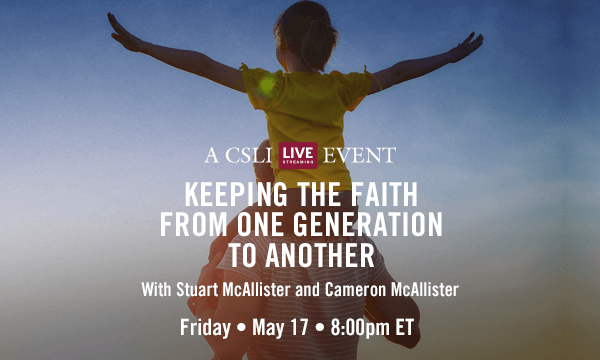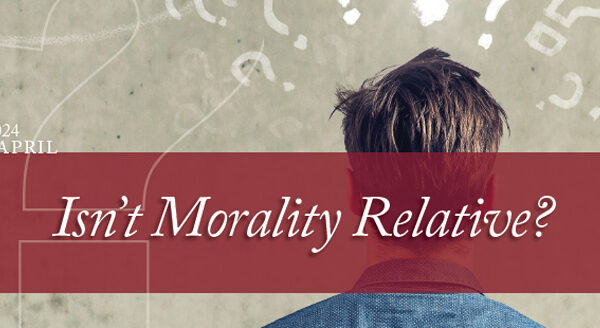Back to series
A Reader’s Guide Through The Wardrobe: Exploring C.S. Lewis’s Classic Story
Jack’s Life: A Memory of C.S. Lewis



Three Book Reviews
Click here to open a Print - Friendly PDF
Alan Jacobs’ new biography of C.S. Lewis is a fascinating study weaving together his life and writings. It is a great addition to the fast growing literature on Lewis. It is beautifully written and always interesting, at many points shedding new light on aspects of Lewis’s life. Each chapter is titled with a quote about Lewis—all but one from Jack (C.S. Lewis) himself. When an event in Jack’s life relates to something later in his writings, Jacobs carefully draws parallels and connections. As the title suggests, an important goal is to show what sort of person wrote The Chronicles of Narnia. There are many helpful insights in this book; here are a few for you to consider:
- J.K. Rowling, author of the Harry Potter books, “adored” the Narnia books when a child. (p. xi)
- One of Jacobs’ central ideas in this book is that Lewis had a “willingness to be enchanted.” (p. xxi)
- Although Lewis drew on both reason and imagination, he insists that the “imaginative man in me is older.” (p. xiv)
- Lewis was a Narnian long before he wrote the books. (p. xxv)
- Lewis’s father, Albert, wrote after his wife’s death that she was “as good a woman, wife and mother as God has ever given to man.” (p. 9)
- Lewis loved to go for long walks. There are also some long hikes in the Narnia books.
- His tutor, Kirk, wrote of Jack that, “He has read more classics than any boy I ever had—or indeed might add than any I ever heard of, unless it be an Addison or Landor or Macaulay. These are people we read of, but I have never met any . . . He is the most brilliant translator of Greek plays I have ever met.” (p. 59)
- Jack never passed his math entrance exams for Oxford. If he had not been exempted from them as a returning serviceman, he might never have attended a university at all. (p. 66)
- In May 1921 he found that he had won the Chancellors Prize at Oxford for an essay on “Optimism.” (p. 102)
- Lewis said that his chosen career as a tutor/teacher was “the only one in which I can ever hope to go beyond the meanest mediocrity.” (p. 107)
- Lewis, while meditating on his own self-admiration: “And, will you believe it, one out of every three is a thought of self-admiration: when everything else fails, having had its neck broken, up comes the thought, ‘What an admirable fellow I am to have broken their necks!’ I catch myself posturing before the mirror, so to speak, all day long. I pretend I am carefully thinking out what to say to the next pupil (for his good, of course) and then suddenly realize I am really thinking how frightfully clever I’m going to be and how he will admire me . . . And then when you force yourself to stop it, you admire yourself for doing that. It is like fighting the hydra . . . There seems to be no end to it. Depth under depth of selflove and self-admiration.” (p. 133)
- Jack’s wife Joy wrote about what she was taught before becoming a Christian, that “Life is only an electrochemical reaction. Love, art, and altruism are only sex. The universe is only matter. Matter is only energy. I forget what I said energy is only.” (p. 142)
- In 1917 Lewis had a physical exam: his height was five feet eleven inches, and he weighed 13 stone (about 182 pounds). (p. 164)
- Jack first wrote chapters of The Screwtape Letters as installments for a magazine. One clergyman (missing the point) wrote in to cancel his subscription because the advice given by Wormwood was “not only erroneous but positively diabolical.” (p. 168)
- Screwtape’s advice points out the demonic way, “An ever increasing craving for an ever diminishing pleasure is the formula . . . To get a man’s soul and give him nothing in return—that’s what really gladdens Our Father’s heart.” (p. 189)
- Lewis says of friendship, “Every real friendship is a sort of secession, even a rebellion . . . In each knot of Friends there is a sectional ‘public opinion’ which fortifies its members against the public opinion of the community in general. Each therefore is a pocket of potential resistance.” (p. 203)
There are many other helpful insights in this biography. There are occasional interpretations of Lewis that I find dubious (particularly a few pages’ blast against apologetics), but I find Jacobs’ judgments characteristically trustworthy. Jacobs helps us see that almost everything of substance that Lewis writes about in any of his writings can be found in the Narnia books. As Barfield points out, what C.S. Lewis thought about everything could often be found in what he thought about anything.
A Reader’s Guide Through The Wardrobe: Exploring C.S. Lewis’s Classic Story
by Leland Ryken and Marjorie Lamp Mead
A Reader’s Guide Through The Wardrobe is an excellent and appealing study of The Lion, The Witch and The Wardrobe. The book combines the efforts of Leland Ryken, a professor of English at Wheaton College, and Marjorie Mead, associate director of the Wade Center since 1977. As you might expect, there are many literary insights into The Lion, The Witch and The Wardrobe (LWW) as well as interesting facts and quotes about C.S. Lewis, his process in writing about Narnia, and his sources for names and ideas. This study of LWW is clearly written and very satisfying on a number of levels.
 The book proceeds through a chapter-by-chapter study of LWW, followed by chapters on “How the Narnian Books Came to Be,” a chapter addressing criticisms of LWW and the Narnia series, and an appendix on the correct order of reading Narnia. Here are a few of the many insights given in this work. First, LWW was not written as an allegory. It all started with images in C.S. Lewis’s mind. Lewis had an image of a Faun carrying packages and of a lamppost, and had been having dreams about lions. Lewis set out to create a story about these images, and naturally some of Lewis’s beliefs about Christ found their way into the story. However, LWW as well as the rest of The Chronicles of Narnia, are not to be interpreted as allegory, where each detail has a spiritual meaning (as in Pilgrim’s Progress). Other interesting facts revealed in The Reader’s Guide Through The Wardrobe:
The book proceeds through a chapter-by-chapter study of LWW, followed by chapters on “How the Narnian Books Came to Be,” a chapter addressing criticisms of LWW and the Narnia series, and an appendix on the correct order of reading Narnia. Here are a few of the many insights given in this work. First, LWW was not written as an allegory. It all started with images in C.S. Lewis’s mind. Lewis had an image of a Faun carrying packages and of a lamppost, and had been having dreams about lions. Lewis set out to create a story about these images, and naturally some of Lewis’s beliefs about Christ found their way into the story. However, LWW as well as the rest of The Chronicles of Narnia, are not to be interpreted as allegory, where each detail has a spiritual meaning (as in Pilgrim’s Progress). Other interesting facts revealed in The Reader’s Guide Through The Wardrobe:
- The span of the seven Narnia books covers 2,555 Narnian years, to only 52 English or earth years. (p. 56)
- The origin for the name Aslan is from the notes to Lane’s Arabian Nights. It is Turkish for Lion. Lewis pronounced it as Ass-lan. He meant to portray the Lion of Judah (Jesus). (p. 66)
- There have been 85 million sets of Narnia sold since publication. (p. 139)
- The LWW was originally thought by Lewis to be a single book, not part of a series.
- It took ten years from 1938 (when Lewis first had the idea of a children’s story) till 1948 to actually get down to completing the task. (p. 136f)
- After LWW, the rest of the books came quickly, published one per year after 1950. (p. 140)
- The last book written (though the next to last published) was The Magician’s Nephew. This work was the hardest one for Lewis to write. He had to go back to it several times.
- Father Christmas, though thought by some (Roger Green and J.R.R. Tolkien) to be an alien intrusion into the story (LWW), serves an important role. First, his arrival shows that the spell “always winter and never Christmas” has started to be broken. Second, the gifts he brings serve an important role in revealing insights into the characters of LWW: Peter—shield and armor; Susan—bow, quiver, and ivory horn; Lucy—bottle of cordial and small dagger. (p. 75)
- Strange mythological creatures present on Aslan’s side—dryads, raiads, centaurs, unicorns, a bull with the head of a man, a great Dog, animals with symbolic means (pelican, eagle, leopards)—indicate a historical continuity coming to its fulfillment in Aslan. (p. 84)
- The Witch’s army is decidedly sinister: giants, werewolves, Ghouls, Boggles, Ogres, Minotaurs, Cruels, Hags, Specters and people of the Toadstools. (p. 92)
- There is an interesting contrast between the Harry Potter series and the Narnia books. In the Narnia series, magic is part of the genre of fairy tale. It is actually an affirmation of the view that the supernatural is real. In the Harry Potter books, magic is the central focus and draws attention to itself. In the Narnia books, magic exists primarily in the fantasy world apart from our world (with a couple exceptions). In Harry Potter, the magic is located in our world. In LWW, magic is practiced primarily by supernatural agents, whereas in Harry Potter magic is the result of human spell casting and occult practice. In Narnia the children are not generally permitted to engage in magic but invited to call on Aslan for help. Lewis labels some attempts at magic as black sorcery (wicked dwarf Nikabrik in Prince Caspian). (p. 88-91)
- Although there is some violence in the Narnia series and in LWW (Peter’s fight, Aslan’s death, the final battle), Lewis defended its place in a children’s series. He argued that this world does contain violence, death, the need for courage, and a battle between good and evil. To shield children from such realities may give them “a false impression and feed them on escapism in the bad sense.” They are likely to meet cruel enemies so it is of value to have heard of brave knights. Lewis says: “Let there be wicked kings and beheadings, battles and dungeons, giants and dragons, and let villains be soundly killed at the end of the book. Nothing will persuade me that this causes an ordinary child any kind or degree of fear beyond what it wants, and needs to feel. For, of course, it wants to be a little frightened.” (p. 87)
- The book advocates that you read the The Chronicles of Narnia in the order of publication (LWW first, etc.) rather than in the order of Narnian chronology (The Magician’s Nephew first). (p. 172-174)
- The section addressing the criticisms of the Narnia Chronicles is very helpful. (p. 142-154)
- Lewis believed that the battle between good and evil demanded that we take sides. Lewis wrote: “…there is no neutral ground in the universe: every square inch, every split second, is claimed by God and counterclaimed by Satan.” (p. 165) Overall, this is an outstanding book, helpful for teaching on LWW or for study groups on the book.
Jack’s Life: A Memory of C.S. Lewis
by Douglas Gresham
This biography is a poignant, fascinating view of C.S. Lewis by his stepson, Douglas Gresham. It is unique because it is the only biography written by someone who actually lived with Lewis. Douglas is bright and insightful about Jack’s life as well as giving many personal family details not discussed in other works. He provides a window into Lewis’s daily life with Warnie (his brother, Warren), Mrs. Moore (the mother of his soldier friend Paddy who died in WWI; Lewis had promised to care for her if Paddy died), Paxford (who helped around The Kilns), and other visitors.
Douglas calls C.S. Lewis “the finest man and best Christian I have ever known. I loved him and deeply cherish his memory” (p. 1). Later, commenting on Lewis’s death, Douglas says, “He was the finest man I ever knew in my life, and I miss him to this day” (p. 164). This is a powerful testimony by one who lived with Lewis for a number of years. Here are a few of the many insights Douglas gives in his book, many of which are not found elsewhere:
- As a small boy C.S. Lewis began to call himself “Jacksie” and would answer to nothing else. He took the name from a small dog that he liked that had been tragically run over. (p. 2)
- When Jack was hospitalized during WWI for war wounds, the only thing he could keep in his stomach was champagne, so for some time it was the only thing he consumed. “Never again would he willingly drink the stuff.” (p. 48)
- When he was wounded, some shrapnel lodged close to his heart but was too close for an operation, so doctors left it there. (p. 49)
- He experienced regular nightmares about being back in the trenches. (p. 51)
- Before the war, Jack twice failed the Oxford entrance exam in math. After the war, Oxford dropped the requirement. Otherwise, C.S. Lewis likely would not have been able to attend and later work at Oxford. His future would have been different. (p. 52)
- Jack drove a car to Oxford on their move to The Kilns. However, that was the first and last time he ever attempted to drive. (p. 70)
- Mrs. Moore treated Jack as her personal slave, and Warren resented her doing so; but Jack put up with it. (p. 77)
- Fred Paxford had a little private bungalow in the garden and lived there for 33 years doing odd jobs around The Kilns.
- Warnie struggled with alcoholism during much of his later life.
- Jack encouraged Tolkien when publishers were rejecting The Lord of the Rings. Tolkien, on the other hand, tried to discourage Jack from sending The Lion, the Witch and the Wardrobe to any publisher. (p. 139)

Arthur W. Lindsley
Senior Fellow for Apologetics, CSLI Arthur W. Lindsley is the Vice President of Theological Initiatives at the Institute for Faith, Works, & Economics. He has served at the C.S. Lewis Institute since 1987 both as President until 1998 and currently as Senior Fellows for Apologetics. Formerly, he was director of Educational Ministries at the Ligonier Valley Study Center, and Staff Specialist with the Coalition for Christian Outreach. He is the author of C.S. Lewis's Case for Christ, True Truth, Love: The Ultimate Apologetic, and co-author with R.C. Sproul and John Gerstner of Classical Apologetics, and has written numerous articles on theology, apologetics, C.S. Lewis, and the lives and works of many other authors and teachers. Art earned his M.Div. from Pittsburgh Theological Seminary and a Ph.D. in Religious Studies from the University of Pittsburgh. COPYRIGHT: This publication is published by C.S. Lewis Institute; 8001 Braddock Road, Suite 301; Springfield, VA 22151. Portions of the publication may be reproduced for noncommercial, local church or ministry use without prior permission. Electronic copies of the PDF files may be duplicated and transmitted via e-mail for personal and church use. Articles may not be modified without prior written permission of the Institute. For questions, contact the Institute: 703.914.5602 or email us.
COPYRIGHT: This publication is published by C.S. Lewis Institute; 8001 Braddock Road, Suite 301; Springfield, VA 22151. Portions of the publication may be reproduced for noncommercial, local church or ministry use without prior permission. Electronic copies of the PDF files may be duplicated and transmitted via e-mail for personal and church use. Articles may not be modified without prior written permission of the Institute. For questions, contact the Institute: 703.914.5602 or email us.
-
Recent Podcasts
A Welcome Change in Apologetics
by Randy Newman, Aimee Riegert on April 19, 2024We’re burdened for our friends who don’t know...Read More
-
Questions That Matter Podcast – Samuel James and Digital Liturgies
by Samuel James, Randy Newman on April 19, 2024
-
The Side B Stories – Dr. James Tour’s story
by Jana Harmon, James Tour on April 12, 2024
-
Recent Publications
Isn’t Morality Relative?
by Christopher L. Reese on April 1, 2024It is widely accepted in the Western world...Read More
-
Do Muslims and Christians Worship the Same God?
by Andy Bannister on March 1, 2024
-
Artificial Intelligence and Its Impacts on Humanity
by John Lennox on February 13, 2024
0
All Booked
0.00
All Booked
0.00
All Booked
22140
GLOBAL EVENT: Keeping the Faith From One Generation To Another with Stuart McAllister and Cameron McAllister, 8:00PM ET
https://www.cslewisinstitute.org/?event=global-event-keeping-the-faith-from-one-generation-to-another-with-stuart-mcallister-and-cameron-mcallister-800pm-et&event_date=2024-05-17®=1
https://www.paypal.com/cgi-bin/webscr
2024-05-17

Next coming event
Days
Hours
Minutes
Seconds
GLOBAL EVENT: Keeping the Faith From One Generation To Another with Stuart McAllister and Cameron McAllister, 8:00PM ET
On May 17, 2024 at 8:00 pmSpeakers

Arthur W. Lindsley
Senior Fellow for Apologetics, CSLI
Team Members





